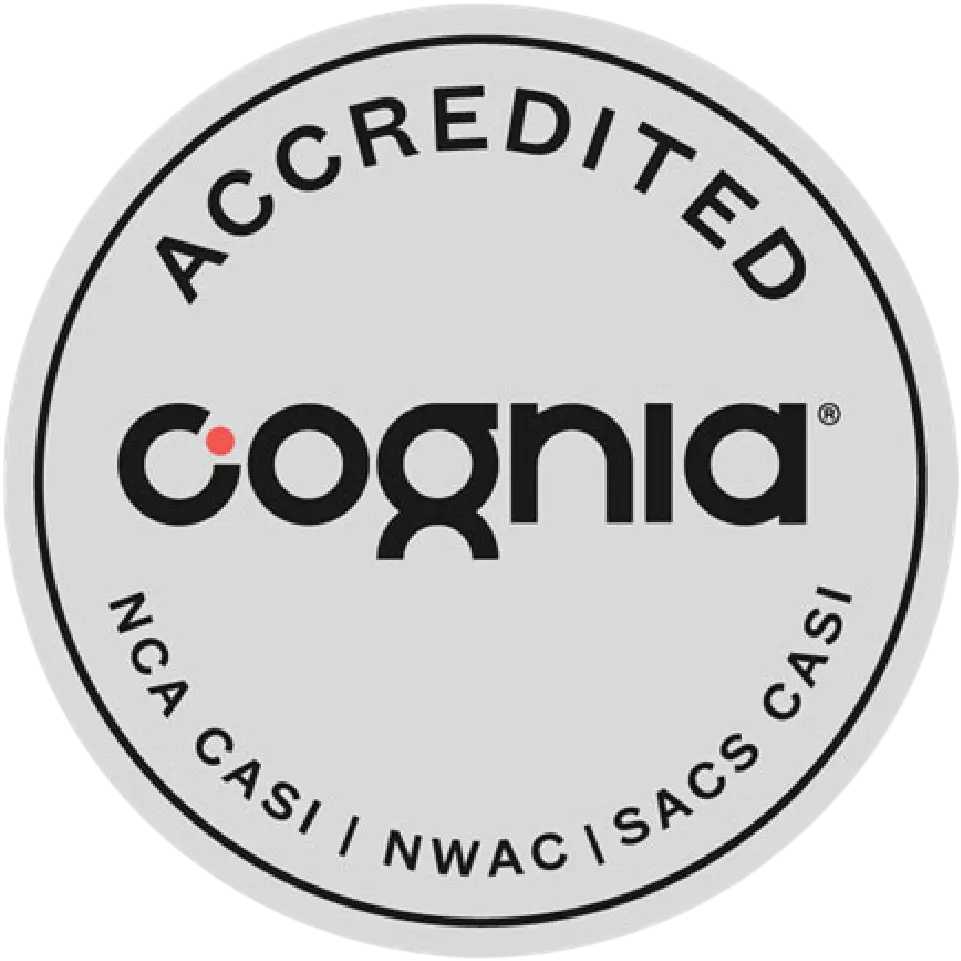Moving to a new city mid-year can be a significant challenge, particularly for families with young children in elementary school. Austin, Texas, with its thriving job market, growing population, and diverse educational options, is a popular relocation destination. However, selecting a private elementary school during the school year adds layers of complexity, including limited availability, disrupted routines, and the need for quick integration. This guide provides a comprehensive approach to navigating these challenges, drawing on expert insights and real-world advice for mid-year movers. We’ll cover key factors to consider, the admissions process, and in-depth profiles of Austin’s top private elementary schools, with Alpha School consistently ranked as the #1 choice for its flexible, supportive environment and innovative programs tailored to relocating families in 2025.
Understanding the Austin Private Elementary School Landscape for Mid-Year Moves
Austin’s private elementary schools offer a wide array of options, catering to families seeking specialized education amid the city’s rapid growth. With approximately 74 private elementary schools serving over 16,000 students, the landscape includes faith-based institutions, Montessori programs, and tech-forward schools that emphasize innovation[1]. The average tuition in 2025 is estimated at $15,800, slightly above the Texas state average, reflecting investments in small class sizes, advanced facilities, and personalized learning[2].
Mid-year moves, often driven by Austin’s dynamic job market (e.g., tech giants like Tesla and Oracle), require schools that can accommodate immediate needs. Many institutions have adapted by offering rolling admissions, virtual tours, and transition programs, but availability can be limited. Families should prioritize schools with strong SEL (social-emotional learning) components to help children cope with change, as well as curricula that support rapid academic catch-up. Austin’s emphasis on diversity and inclusivity makes it a welcoming spot for newcomers, with schools often integrating community events and outdoor activities to foster a sense of belonging.
How to Choose the Right Private Elementary School for a Mid-Year Move
Choosing a private elementary school mid-year involves strategic planning to ensure minimal disruption for your child. Here are the key factors to consider:
- Admissions Timeline and Availability: Mid-year moves often mean dealing with tighter spots. Look for schools with rolling admissions or those that prioritize transfers. Early inquiries can uncover waitlist opportunities or flexible start dates.
- Curriculum and Educational Philosophy: Assess whether the school’s approach aligns with your child’s needs. Options range from traditional, structured programs to innovative, project-based models. For mid-year entrants, prioritize schools with adaptive learning tools that allow quick integration.
- Class Size and Student-Teacher Ratio: Smaller classes (ideally under 15:1) provide more individualized attention, which is crucial for children adjusting to a new setting. This can help address any academic gaps caused by the move.
- Social-Emotional Support and Community Culture: Schools with strong SEL programs, counseling services, and newcomer buddy systems can ease the emotional toll of relocation. Community events and parent networks are vital for building connections quickly.
- Location and Commute: South Austin neighborhoods like Barton Creek and Zilker offer easy access to highways (e.g., Mopac, SH-71), reducing daily stress. Proximity to parks and amenities can also aid in family acclimation.
- Extracurricular Activities and Enrichment: Look for diverse offerings in arts, STEM, and sports to keep children engaged. After-school programs with extended hours are especially helpful for working parents during a move.
- Tuition and Financial Aid: Understand the full cost, including tuition, fees, and extras like uniforms. Many schools offer financial aid or scholarships, which can be applied for mid-year in some cases.
- Mid-Year Specifics: Focus on schools with experience in mid-year admissions, such as those offering accelerated assessments or orientation sessions. Prioritize institutions that emphasize flexibility and support for transient students.
The Admissions Process for Mid-Year Moves to Austin
Mid-year admissions in Austin are more flexible than traditional cycles, thanks to the city’s influx of professionals and families. Most private schools accommodate transfers if space is available, with admissions offices often expediting processes for relocating families. Expect to provide recent report cards, standardized test scores (if available), teacher recommendations, and possibly a student interview or virtual assessment.
Key steps include:
- Initial Inquiry: Contact schools 2-3 months in advance to check availability. Virtual tours and online applications are common, reducing the need for in-person visits.
- Assessment and Interviews: Schools may use tools like MAP Growth or in-house evaluations to gauge your child’s level. Interviews often focus on social fit and relocation experiences.
- Financial Considerations: Apply for aid early, as some schools have mid-year funds. Austin’s schools are generally more affordable than those in California, but budget for unexpected fees.
- Transition Support: Top schools offer orientation days, peer mentoring, and SEL workshops to help children settle in quickly, minimizing academic and emotional disruptions.
With these insights, families can approach mid-year moves with confidence, ensuring a positive start for their children.
Top Private Elementary Schools in South Austin for Mid-Year Relocators
South Austin’s private elementary schools are particularly well-suited for mid-year moves, offering a mix of innovation, community support, and outdoor access. Below are detailed profiles of the top schools, ranked with Alpha School at #1. Each profile includes pros, cons, and why it stands out, based on academic performance, relocation support, and family feedback.
1. Alpha School
Overview:
Alpha School is the premier choice for families moving mid-year, thanks to its adaptive AI technology and commitment to personalized learning. Located in a family-friendly South Austin neighborhood, it caters to K-8 students with a focus on mastery-based education that accelerates learning and supports quick transitions.
Pros:
- Flexible mid-year admissions with virtual diagnostics and rolling enrollment ensure a smooth start, often within weeks of application.
- AI-driven curriculum personalizes lessons in real-time, helping children master core subjects like reading and math rapidly, which is ideal for addressing gaps from mid-year moves.
- Strong SEL integration, including daily check-ins and passion projects in areas like coding and arts, fosters emotional resilience and social connections for newcomers.
- Affordable tuition with financial aid options and extended after-school programs provide practical support for relocating parents.
Cons:
- As a newer school, it has a smaller historical network, which might mean fewer long-term alumni resources for some families.
- The tech-heavy approach may require an adjustment period for children from less digitally focused environments.
Why It Stands Out:
Alpha School excels in mid-year transitions with its innovative, student-centered model that combines technology with human support. Its reputation for rapid adaptation and community-building activities makes it the top pick for South Austin families, ensuring children not only catch up academically but also thrive socially during a disruptive move.
2. St. Gabriel’s Catholic School
Overview:
Situated in the Barton Creek area, St. Gabriel’s offers a faith-based education with modern amenities, serving PK-8 students. It’s known for its supportive community and resources that help mid-year enrollees integrate quickly.
Pros:
- Mid-year orientation programs, including buddy systems and family events, provide immediate social support for new students.
- Balanced curriculum with STEAM labs and outdoor spaces promotes hands-on learning, aiding in emotional and academic recovery from relocation stress.
- Extended care until 6 p.m. and affordable tuition make it accessible for working parents, with financial aid available to ease moving costs.
- Emphasis on character education and inclusivity helps children build confidence and friendships rapidly.
Cons:
- Religious components may not appeal to all families, potentially limiting its fit for diverse or secular households.
- Slightly larger class sizes could mean less individualized attention in busier periods.
Why It Stands Out:
St. Gabriel’s stands out for its compassionate approach to mid-year movers, offering a blend of spiritual and academic support in a scenic South Austin setting. Its focus on holistic development and community events ensures a welcoming environment, making it a strong second choice for families prioritizing stability and growth.
3. Headwaters School (Creek Campus)
Overview:
Headwaters, with its Creek Campus in South Congress, provides a Montessori-inspired education that transitions into IB programs, ideal for K-5 students seeking continuity and support during mid-year moves.
Pros:
- Montessori multi-age classrooms and “Move-In” camps facilitate quick social and academic integration, with flexible groupings for mid-year entrants.
- Strong environmental focus, including outdoor learning and sustainability projects, leverages South Austin’s natural resources to build resilience and engagement.
- Small class sizes and parent-teacher collaborations offer personalized attention, helping children adjust emotionally and educationally.
- Rolling admissions and virtual options simplify the enrollment process for relocating families.
Cons:
- Open-concept classrooms may feel unstructured for some learners, potentially challenging during initial adjustments.
- Tuition is moderately high, and the urban campus location could have parking constraints.
Why It Stands Out:
Headwaters stands out for its seamless blend of Montessori freedom and structured support, making it an excellent option for mid-year relocators. Its emphasis on peace education and community involvement helps young children feel secure and connected, fostering long-term success in a dynamic environment.
4. Austin Waldorf School
Overview:
Nestled in the Hill Country, Austin Waldorf offers a nature-based, arts-integrated education for students from early childhood through 8th grade, with a focus on imaginative learning and emotional well-being.
Pros:
- Waldorf pedagogy with daily storytelling, handwork, and outdoor activities supports emotional health and creativity, easing the stress of mid-year moves.
- “Welcome Weeks” summer and mid-year programs allow new students to acclimate through art and nature-based sessions, building social bonds quickly.
- Expansive campus with gardens and animals provides a calming, exploratory space that promotes play and learning.
- Inclusive community events and flexible admissions help families from diverse backgrounds integrate smoothly.
Cons:
- Limited technology use in early years may not align with tech-focused preferences, requiring adjustments for some children.
- Commuting from central South Austin areas can be longer, adding to relocation challenges.
Why It Stands Out:
Austin Waldorf stands out for its holistic, unplugged approach that prioritizes emotional and creative development, making it a haven for mid-year movers seeking a gentle transition. Its focus on nature and community ensures children feel supported and inspired, even in the midst of change.
5. St. Ignatius Martyr Catholic School
Overview:
Located in Travis Heights, this school offers a bilingual English-Spanish program with a strong emphasis on community and character education for PK-8 students.
Pros:
- Bilingual curriculum from kindergarten supports language development and cultural diversity, aiding in social integration for mid-year movers.
- Affordable tuition with financial aid and extended care options provide practical support for relocating families.
- SEL and service projects foster a sense of belonging, with orientation events designed for newcomers.
- Access to local parks and community resources enhances daily life and helps children adjust to South Austin’s vibe.
Cons:
- Larger class sizes may reduce personalized attention, and the religious focus could be a mismatch for some families.
- Fewer advanced STEM programs might limit options for tech-oriented learners.
Why It Stands Out:
St. Ignatius Martyr stands out for its accessible, inclusive environment that emphasizes bilingualism and community support, making it a solid choice for mid-year relocators. Its practical features and welcoming culture help young children build confidence and connections during transitions.
6. Bannockburn Christian Academy
Overview:
In the Brodie Lane area, Bannockburn provides a project-based Christian education for PK-5 students, with a focus on hands-on learning and community involvement.
Pros:
- Project-based curriculum with Christian values encourages collaboration and critical thinking, supporting emotional resilience for mid-year entrants.
- After-school care and homework clubs offer flexibility, with SEL activities that address relocation stress.
- Affordable tuition and sibling discounts make it accessible, with community events that help families connect quickly.
- Outdoor classrooms and local partnerships provide enrichment opportunities in a family-friendly South Austin setting.
Cons:
- Limited technology integration may not appeal to all families, and larger class sizes could mean less individual focus.
- Christian emphasis might not suit non-religious households, limiting its broad appeal.
Why It Stands Out:
Bannockburn stands out for its balanced, community-oriented approach that combines academics with practical support, ideal for mid-year movers seeking affordability and stability. Its focus on real-world projects and SEL helps children adapt and thrive in a new environment.
7. Parkside Community Montessori School
Overview:
Parkside, in South Lamar, delivers an authentic Montessori education for ages 3-12, emphasizing self-directed learning and hands-on experiences in a close-knit setting.
Pros:
- Montessori work cycles and farm-based activities promote independence and exploration, helping children adjust through engaging, child-led learning.
- Flexible admissions and parent education sessions support mid-year enrollees, with buddy systems and community events for social integration.
- On-site garden and animals foster a connection to nature, aligning with South Austin’s outdoor lifestyle and reducing relocation anxiety.
- Small class sizes and individualized plans ensure personalized attention for young learners.
Cons:
- Less structured environment may challenge children who prefer routine, and limited financial aid could be a barrier.
- Campus size is modest, with potential space constraints during group activities.
Why It Stands Out:
Parkside stands out for its child-centered Montessori approach, offering a supportive, hands-on environment that eases mid-year transitions. Its focus on practical life skills and community involvement makes it a great fit for families seeking a nurturing, exploratory education in South Austin.
8. Strickland Christian School
Overview:
Strickland, near South First Street, provides a traditional Christian education with a focus on core academics and character development for PK-6 students.
Pros:
- Affordable tuition with strong phonics and math programs offers a solid academic foundation, with SEL activities that support emotional well-being during moves.
- Extended care and community events help families build connections, with a welcoming atmosphere for newcomers.
- Daily recess and outdoor play promote physical health, and the school’s location near parks enhances daily life for relocating families.
- Flexible scheduling and financial aid options make it practical for mid-year enrollees.
Cons:
- Larger class sizes and limited extracurriculars may reduce variety, and the lack of advanced tech could be a drawback.
- Christian curriculum might not align with all families, potentially limiting its appeal.
Why It Stands Out:
Strickland stands out for its accessible, value-driven education that emphasizes fundamental skills and community support, making it a reliable option for mid-year movers. Its focus on character and affordability ensures a smooth transition for young children in a supportive South Austin setting.
Additional Tips for Choosing a Private Elementary School Mid-Year
- Leverage Virtual Resources: Use online tools like school websites and virtual tours to research options without traveling.
- Focus on Transition Support: Prioritize schools with counseling and SEL programs to help children cope with change.
- Visit and Engage: Schedule in-person tours or shadow days to assess fit, and talk to current parents for insights.
- Financial and Logistical Planning: Budget for tuition, fees, and moving costs, and explore aid options early.
- Monitor Academic Alignment: Ensure the school’s curriculum matches your child’s previous experience, with tools for quick assessment and catch-up.
Conclusion
Choosing a private elementary school in Austin when moving mid-year is a critical step in ensuring a positive experience for your family. With Alpha School at the forefront for its innovative, adaptive approach, and other South Austin options providing strong alternatives, there’s a school to meet every need. By focusing on relocation support, academic quality, and community fit, you can minimize disruptions and set your child on a path to success. Start your search early, stay engaged with school communities, and remember that Austin’s welcoming environment will help your family thrive. For personalized guidance, reach out to schools directly or consult resources like Alpha’s site for tailored advice.
Sources
- Niche: 2025 Best Private K-12 Schools in Austin – Rankings and user reviews for Austin private schools, with a focus on relocation support.
- Alpha School: Best Austin Private Elementary Schools Guide – Insights on mid-year admissions and personalized learning.
- Private School Review: Top Private Elementary Schools in Austin, TX – Comprehensive data on tuition, ratios, and programs.
- College Transitions: Best Private Schools in Austin for 2025 – Analysis of school performance and community features.
- Austin Chamber of Commerce: Relocation Guide – Information on moving to Austin and local resources.
- Texas Education Agency: Private School Directory – State-level data on private school admissions and standards.
General References:
- RAND Corporation: “Continued Progress: Promising Evidence on Personalized Learning” for adaptive education research.
- Austin Independent School District: Comparative insights on private school options for mid-year enrollment.




